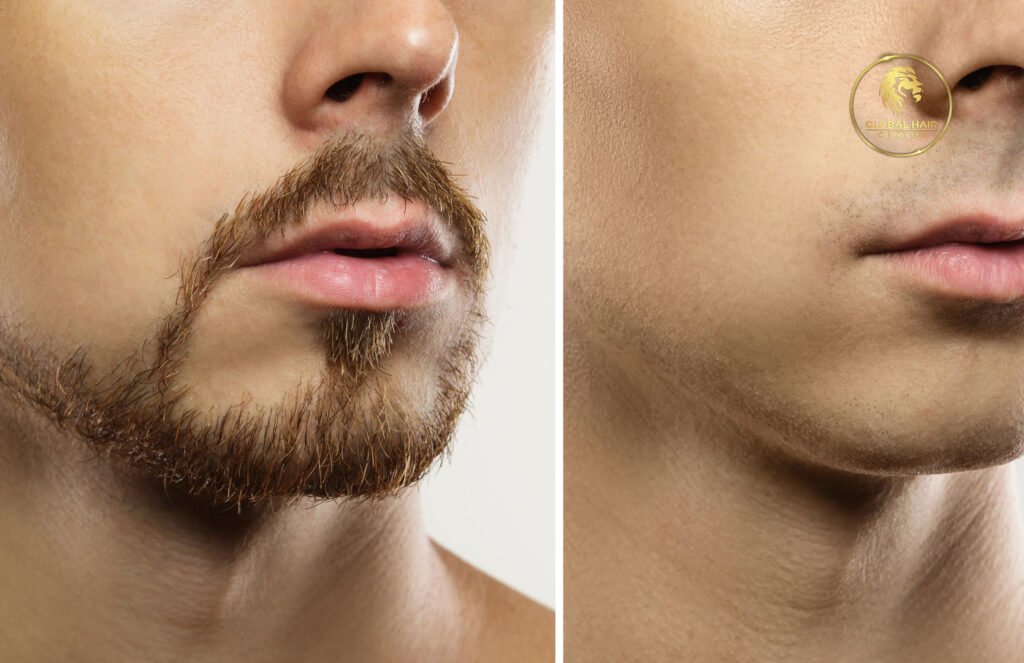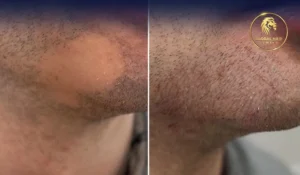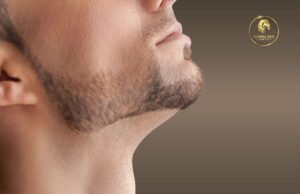Facial Hair Restoration: Unveiling the Secrets of Beard Transplant Procedures

Facial Hair Restoration: Unveiling the Secrets of Beard Transplant Procedures
Facial hair has long been associated with masculinity, confidence, and style. However, not all men are blessed with naturally thick and full beards. Beard transplant procedures offer a solution for those struggling with sparse or patchy facial hair growth.
In this guide, we’ll delve into the secrets of beard transplant procedures, exploring the process, benefits, considerations, and expected results.
Understanding Beard Transplant Procedures
Beard transplant procedures involve the surgical transplantation of hair follicles from donor areas to the beard region. Typically, donor hair is harvested from the back of the scalp, where hair follicles are genetically resistant to balding and provide abundant grafts for transplantation. The harvested follicles are then meticulously transplanted into the beard area, where they take root and grow as natural facial hair.
The Consultation Process
Before undergoing a beard transplant procedure, patients undergo a comprehensive consultation with a qualified cosmetic doctor or hair transplant specialist.
During the consultation, the doctor assesses the patient’s suitability for the procedure, discusses their goals and expectations, and outlines the potential risks and benefits.
The Procedure
Beard transplant procedures are typically performed under local anesthesia on an outpatient basis. The procedure involves several key steps:
- Donor Hair Harvesting: Hair follicles are harvested from the donor area (usually the back of the scalp) using techniques such as Follicular Unit Extraction (FUE) or Strip Harvesting.
- Graft Preparation: The harvested hair follicles are carefully dissected and prepared for transplantation, ensuring the viability and integrity of the grafts.
- Recipient Site Creation: Tiny incisions are made in the beard area where the hair follicles will be transplanted, following the natural contours and angles of the existing facial hair.
- Graft Insertion: The prepared hair follicles are then meticulously inserted into the recipient sites, paying close attention to the desired density and distribution of the beard.
- Post-Procedure Care: Patients receive detailed instructions for post-procedure care, including guidelines for cleaning the transplanted area, avoiding strenuous activities, and taking prescribed medications.
Expected Results and Recovery
Following a beard transplant procedure, patients may experience some initial redness, swelling, and discomfort in the treated area. These side effects typically subside within a few days to a week.
Over the following weeks and months, transplanted hair follicles gradually shed before entering a resting phase. New hair growth typically begins within three to four months, with final results becoming evident after nine to twelve months.
Risks and Considerations
While beard transplant procedures are generally safe and effective, it’s essential to be aware of potential risks and considerations associated with the procedure. These may include:
- Infection.
- Bleeding.
- Scarring.
- Uneven or unnatural-looking results.
- Damage to existing hair follicles.
- Allergic reactions to anesthesia or medications.
To minimize these risks, patients should choose a qualified and experienced doctor, carefully follow all pre and post-procedure instructions, and undergo a thorough medical evaluation before undergoing the procedure.
Benefits of Beard Transplant Procedures
Beard transplant procedures offer a range of benefits for individuals seeking to enhance their facial hair:
- Enhanced Facial Aesthetics: Beard transplants can transform patchy or sparse facial hair into a fuller, more aesthetically pleasing beard, improving overall facial symmetry and balance.
- Increased Confidence: A thick and well-groomed beard symbolizes masculinity and confidence for many men. Beard transplant procedures can boost self-esteem and improve overall quality of life.
- Customized Results: Beard transplant procedures allow for customization of beard shape, density, and style, allowing patients to achieve their desired aesthetic outcome.
- Permanent Results: Unlike temporary solutions such as topical treatments or beard implants, beard transplant procedures offer permanent results, with transplanted hair growing and behaving like natural facial hair.
Advanced Techniques in Beard Transplantation
As technology continues to advance, new techniques in beard transplantation have emerged to enhance the precision and efficacy of the procedure.
One such technique is robotic hair transplantation, which utilizes robotic systems to harvest and transplant hair follicles with unmatched precision and accuracy.
Robotic systems can streamline the process, reduce procedure time, and minimize the risk of human error, resulting in superior outcomes for patients.
Considerations for Ethnic and Cultural Variations
Ethnic and cultural differences can influence the aesthetic goals and considerations of beard transplant procedures.
For example, individuals with African, Asian, or Middle Eastern heritage may have unique hair characteristics, such as curly or coarse hair textures, which require specialized techniques for optimal results.
Doctors must take into account these variations and tailor the transplant procedure to meet the specific needs and preferences of each patient.
Beard Transplant for Transgender and Non-Binary Individuals
Beard transplant procedures can be particularly transformative for transgender and non-binary individuals seeking to align their physical appearance with their gender identity.
Facial hair is often a significant aspect of gender expression, and beard transplantation offers a safe and effective means of achieving a more masculine appearance.
Doctors who specialize in transgender care can provide compassionate and affirming care for individuals undergoing beard transplant procedures as part of their gender-affirming journey.
Psychological Impact and Counseling
The decision to undergo a beard transplant procedure can have significant psychological implications for patients, particularly those struggling with issues of self-image, identity, and confidence.
Doctors need to recognize the psychological impact of facial hair restoration and offer appropriate counseling and support throughout the process.
Providing a safe and empathetic environment where patients can openly discuss their concerns and expectations can help alleviate anxiety and promote positive outcomes.
Post-Procedure Follow-Up and Monitoring
After undergoing a beard transplant procedure, patients require ongoing follow-up and monitoring to ensure optimal healing and long-term success.
Doctors should schedule regular post-procedure appointments to assess the progress of hair growth, address any concerns or complications, and provide guidance on post-procedure care and maintenance.
Open communication between patients and doctors is crucial for monitoring progress, managing expectations, and achieving satisfactory results.
Social and Cultural Implications of Facial Hair
Facial hair holds significant social and cultural significance in many societies, often symbolizing masculinity, maturity, and status. Beard transplant procedures can have profound implications for individuals’ social interactions, self-perception, and cultural identity.
Doctors should be sensitive to these cultural nuances and engage in open dialogue with patients to understand their motivations and expectations regarding facial hair restoration.
Conclusion
Beard transplant procedures offer a life-changing solution for men struggling with sparse or patchy facial hair growth.
By understanding the secrets of beard transplant procedures, including the process, benefits, considerations, and expected results, individuals can make informed decisions about pursuing facial hair restoration and achieving their desired aesthetic goals.
At Global Hair Dubai, anyone can unlock the secrets of a fuller, more confident beard with the help of a skilled doctor and proper post-procedure care. Contact Us Today to book your free consultation session.

Beard Transplant in Dubai at Reasonable.
Beard Transplant in Dubai at Reasonable Cost – Global Hair Dubai The beard transplant is one of the most popular.
Read More
Hair Transplant Side Effects in Dubai.
Introduction A hair transplant in Dubai is considered one of the safest and most advanced cosmetic procedures today. Thanks to.
Read More


